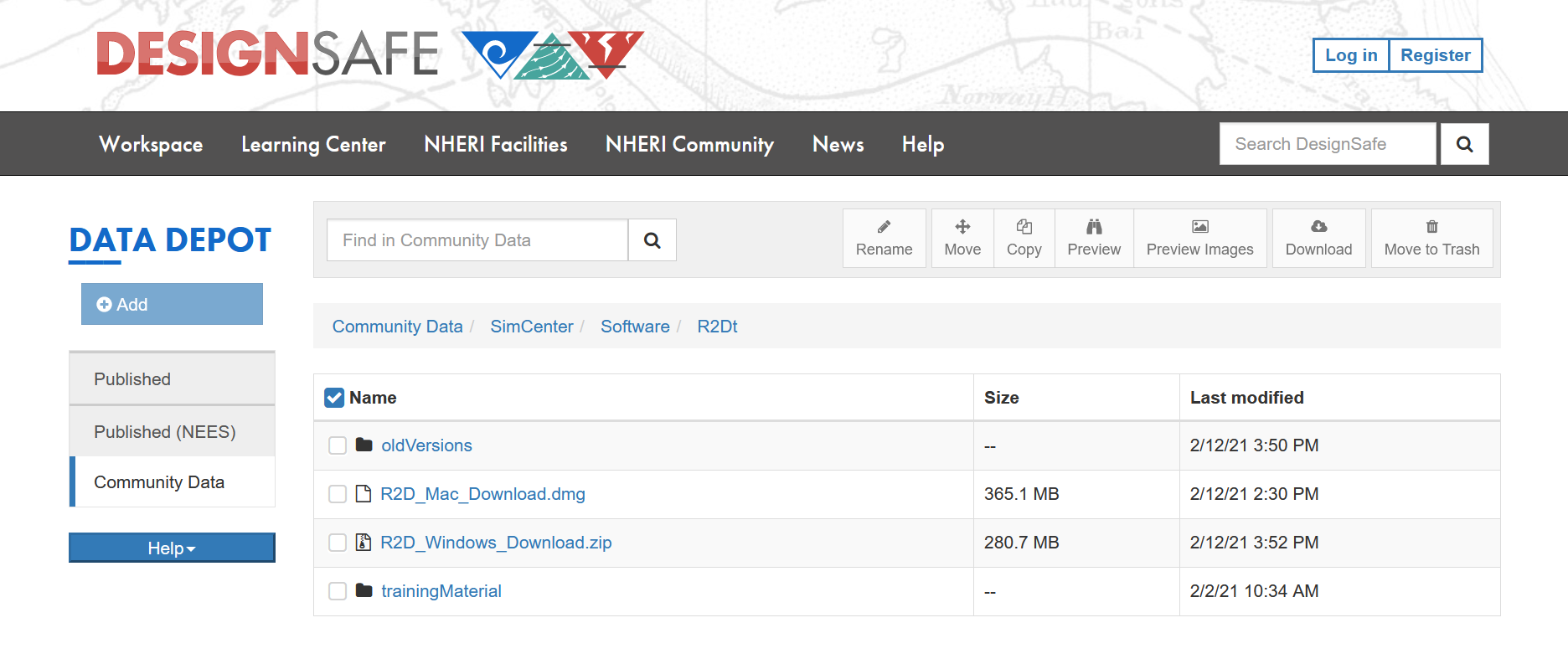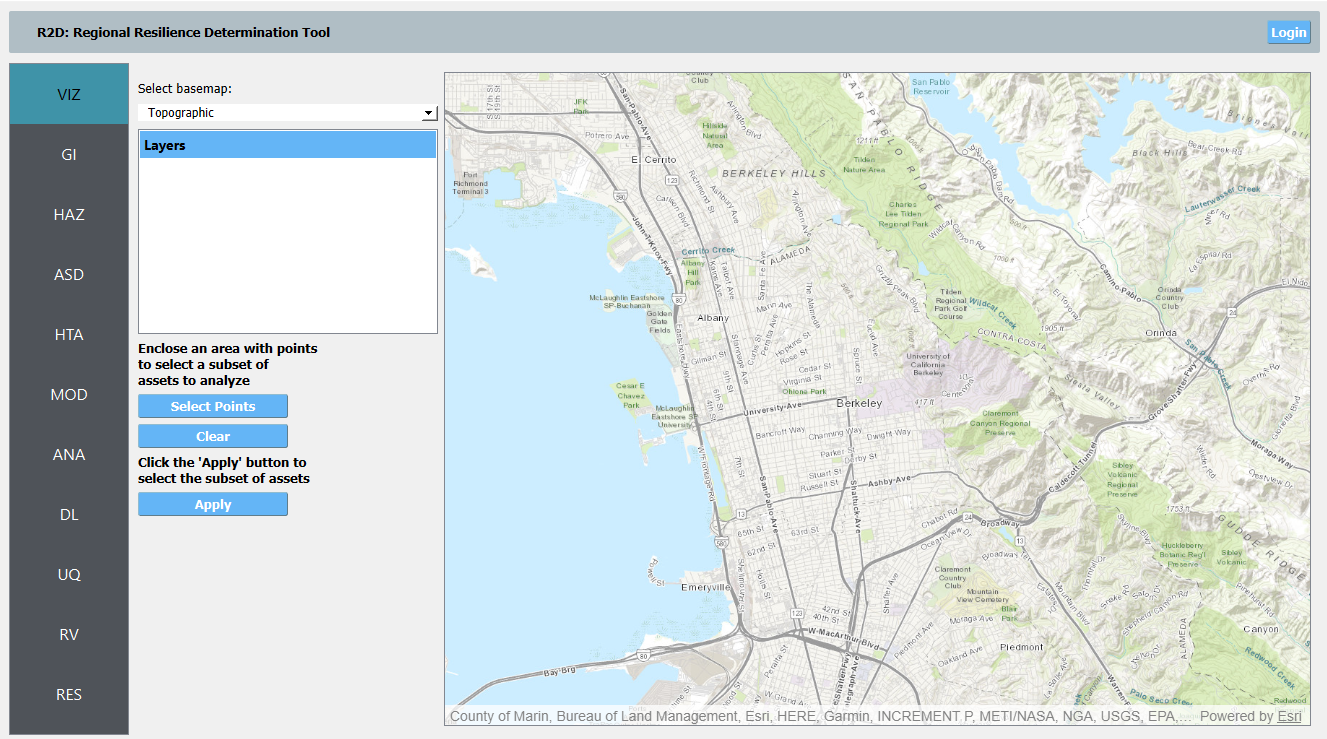1.1.1. Install on Windows 10
1.1.1.1. Install Java
Note
Java is required for utilizing OpenSHA for regional seismic hazard characterization (Earthquake Event Simulation). Skip this step if you do not intend to use this feature.
Download and install Java from the official Java website. Version 16.0.2 is confirmed compatible with the latest R2D app. Follow the installation prompts. If a JVM error appears, suggesting the JAVA_HOME environment variable needs setting, refer to this guide.
Note
The Java website should automatically detect and suggest the appropriate installer for your operating system. Ensure “64-bit Java for Windows” is indicated before downloading the Java installer.
1.1.1.4. Download the Application
Navigate to the R2D Download page, which should resemble Fig. 1.1.1.4.1, for a list of downloadable files and directories. Click the Windows_Download.zip file and select Download in the pop-up window’s bottom right.

Fig. 1.1.1.4.1 R2D Tool download page.
After downloading, extract the zip file to your preferred location, such as C:/SimCenter/. You can create and move a shortcut of the R2D.exe to your Desktop for convenience.
Tip
Use an external compressor like 7-Zip for faster extraction than the default Windows function.
1.1.1.5. Test the Installation
After installation, perform basic checks by running the R2D.exe from the installation directory.
Note
Since the SimCenter is not registered as a Windows vendor, our applications may trigger a warning about unsigned applications from unknown sources when you start the R2D app application for the first time. It is safe to bypass this warning for SimCenter applications.
Launch the application to view the user interface as shown in Fig. 1.1.1.5.1. It’s recommended to run the r2dt-0006 to ensure proper operation.

Fig. 1.1.1.5.1 R2D Tool on startup.
1.1.1.6. Troubleshooting
If the test example fails, refer to troubleshooting.
Note
Analysis failure may be due to the local working directory path defined in the preference menu. Check for:
Avoid setting the local working directory under cloud-synced folders like OneDrive or Box, which may cause file-not-found errors.
Avoid including non-alphabetic characters or spaces in the path, which may potentially lead to encoding or file-not-found errors.
Avoid setting the local working directory on a different drive than the app executable (.exe), which may result in permission errors , e.g. the executable is under the C drive, and the working directory is under the E drive.